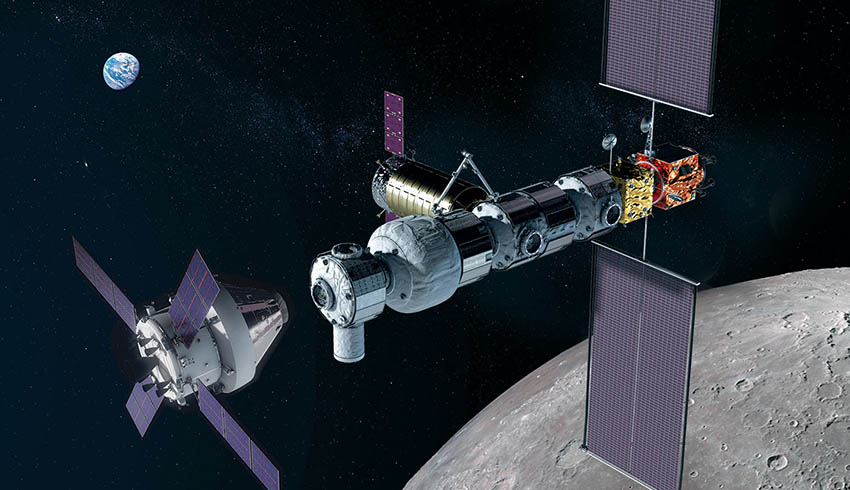NASA is going back to the moon to stay. It’s part of a bold directive from the President for the US to lead a worldwide endeavour to open a new era of space exploration in a measured, sustainable way.
As part of its long-term planning, NASA has been studying an orbital outpost concept in the vicinity of the moon with US industry and the International Space Station partners. NASA is planning to build the Gateway in the 2020s.
The platform will consist of at least a power and propulsion element and habitation, logistics and airlock capabilities. While specific technical and mission capabilities as well as partnership opportunities are under consideration, NASA plans to launch elements of the Gateway on the agency’s Space Launch System or commercial rockets for assembly in space.
NASA administrator Jim Bridenstine welcomed the commitment made by Canadian Prime Minister Justin Trudeau, saying, "NASA is thrilled that Canada is the first international partner for the Gateway lunar outpost. Space exploration is in Canada’s DNA. In 1962, Canada became the third nation to launch a satellite into orbit with Alouette 1."
Canada is going to build a next generation Canadarm for the Gateway lunar outpost and support NASA's work with industry to return to the surface of the moon, among other efforts.
"Today, Canada leads the world in space-based robotic capabilities, enabling critical repairs to the Hubble Space Telescope and construction of the International Space Station. Our new collaboration on Gateway will enable our broader international partnership to get to the moon and eventually to Mars," Bridenstine added.
The power and propulsion element will be the initial component, and is targeted to launch in 2022. Using advanced high-power solar electric propulsion, the element will maintain the Gateway’s position and can move the Gateway between lunar orbits over its lifetime to maximise science and exploration operations. As part of the agency’s public-private partnership work under Next Space Technologies for Exploration Partnerships, or NextSTEP, five companies are completing four-month studies on affordable ways to develop the power and propulsion element. NASA will leverage capabilities and plans of commercial satellite companies to build the next generation of all electric spacecraft.
The power and propulsion element will also provide high-rate and reliable communications for the Gateway, including space-to-Earth and space-to-lunar uplinks and downlinks, spacecraft-to-spacecraft crosslinks, and support for spacewalk communications. Finally, it also can accommodate an optical communications demonstration – using lasers to transfer large data packages at faster rates than traditional radio frequency systems.
Habitation capabilities launching in 2024 will further enhance our abilities for science, exploration and partner (commercial and international) use. The Gateway’s habitation capabilities will be informed through NextSTEP, and also by studies with the ISS partners. With this capability, crew aboard the Gateway could live and work in deep space for up to 30 to 60 days at a time.
William Gerstenmaier, associate administrator for Human Exploration and Operations Mission Directorate at NASA headquarters in Washington, said, "The Gateway will give us a strategic presence in cislunar space. It will drive our activity with commercial and international partners and help us explore the moon and its resources."

